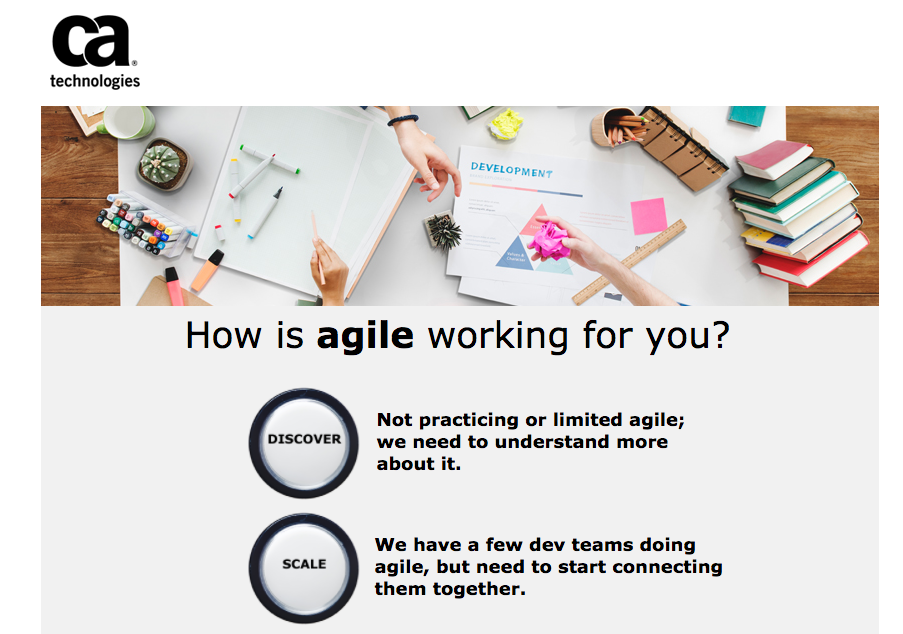
More development teams have adopted agile and lean ways of working to deliver better quality products faster. Despite their efforts, they’re still missing deadlines and churning out buggy software. Most of these teams are expected to solve business problems, but their work doesn’t align with business objectives. In fact, there’s a huge disconnect between development teams and the organizations they serve.
“Agile software development alone can’t solve all your problems,” said Doug Dockery, global sales engineering leader for CA Technologies (CA). “If you’re serious about competing in your markets, you have to change your definition of ‘business as usual.’ Agile can’t succeed as an island.”
The inefficiencies result in budget misses and stalled innovation. Agile ROI is falling short of expectations because it’s much more of a team sport than organizations realize.
“Agile teams and agile businesses are two different things,” said Dockery. “Development teams are being blamed for building the wrong things, but it’s not the team’s fault. Companies haven’t created an environment of alignment, autonomy and trust.”
Alignment ensures that the teams build what matters most to the business. Once the business and development teams are aligned, the development teams have the autonomy to decide the best way to build the product.
Bilateral trust is also important. Without it, companies can’t deliver their best value to customers. The business must trust that developers will build what’s in the best interest of the company.
Conversely, developers need to trust that the business knows what should be built. The result is products that deliver better business value.
Scrum isn’t a silver bullet
Agile development efforts often focus on team structure, workflows and planning. Scrum teams stay busy adopting new technologies, creating user stories, refining processes and estimating the value and cadence of a sprint. Still, their efforts lack positive business impact because the organization
operates in an entirely different manner.
“Companies are approaching agile myopically,” said Dockery. “They think Scrum teams are going to solve all their problems and then they discover they’re worse off than when they were doing waterfall.”
For example, one company’s annual plan included more than 70 BI projects, all of which were active simply because the managers needed “to see progress.” Half of the projects bled over from the previous year. The other half would bleed over into the next year. None of the projects would be com-
pleted that year.
“You might think that Kanban would solve the problem, if you just prioritize work and finish it in order of priority,” said Dockery. “That way, you’d have a steady stream of accomplishments. But what we find is those accomplishments don’t always align to businesses strategy.”
The importance of agile business practices
Change is a constant that businesses have to master in today’s fast-moving economy. Their very survival and relevance depends on their ability to sense and respond to change.
“Markets change and customer demands never stop,” said Dockery. “If you want to lead, you have to anticipate new business realities, including your customers’ shifting requirements. You can’t do that if your strategy and execution don’t align.”
The best way to bridge the gap between the business and its development teams is to decompose initiatives into smaller parts so teams can adapt to changing priorities. Metrics should drive continuous improvement.
“The most successful companies meet quarterly to align strategy and execution,” said Dockery. “If you do this right you can ensure that software development aligns with business strategy. Development teams need to understand what they’re building, why they’re building it and the impact it will have on the business.”
Agile culture requires commitment
Truly agile businesses realize changes to both their strategy and culture must occur to deliver maximum value. They’re focused on continuous improvement, training their employees, measuring performance, and learning from retrospectives.
“You can’t do agile, you have to be agile,” said Dockery. “You have to think in terms of delivering customer value instead of just creating process.”
Learn more at cainc.to/how-agile-are-you.






